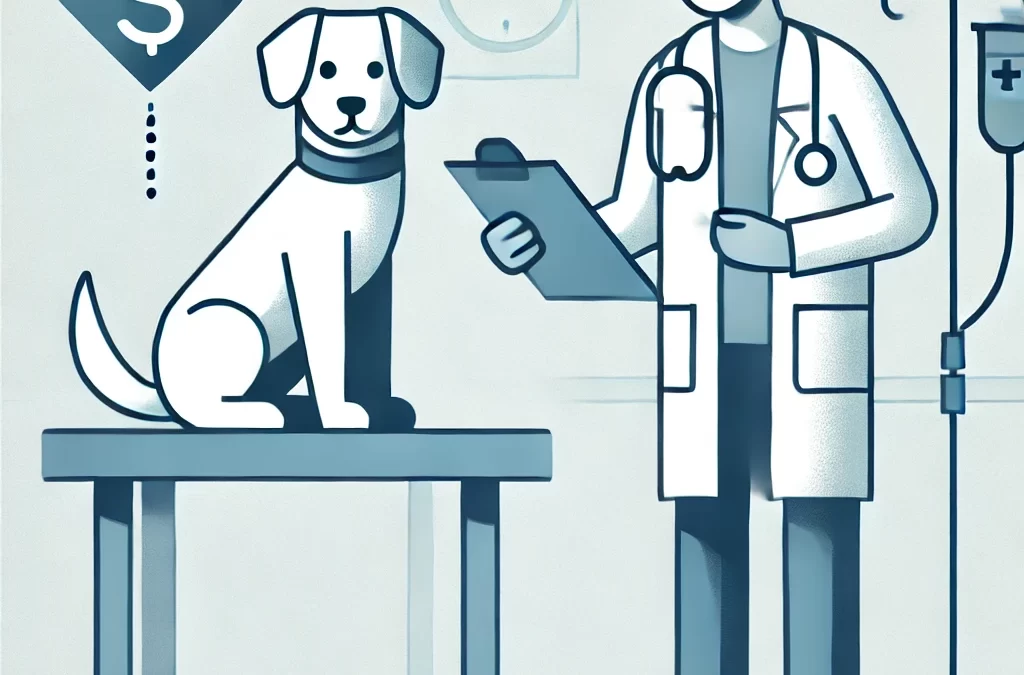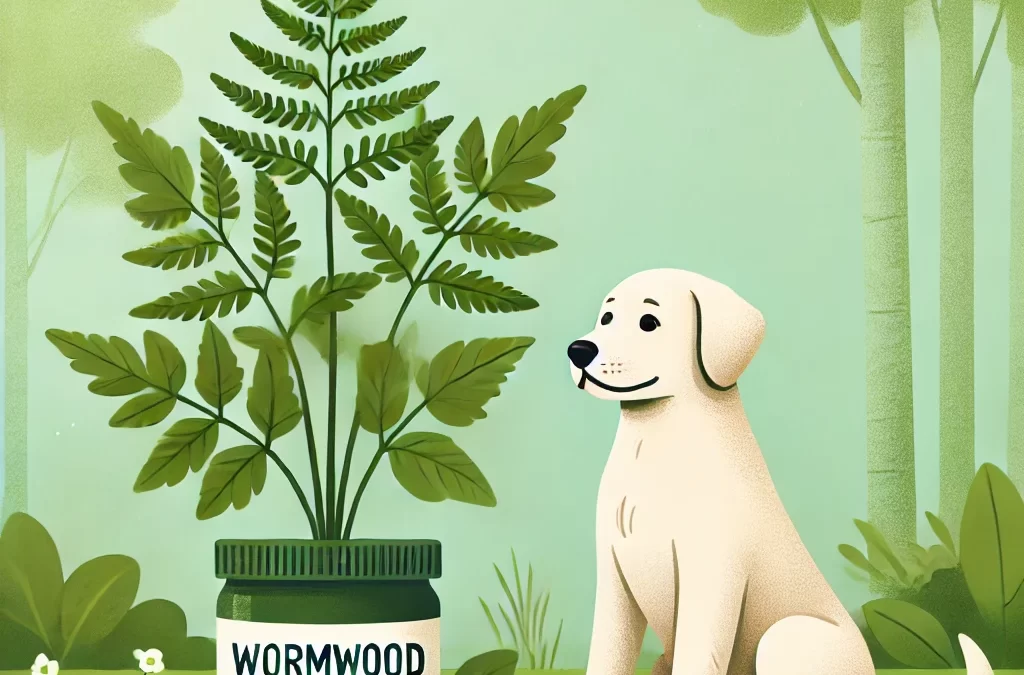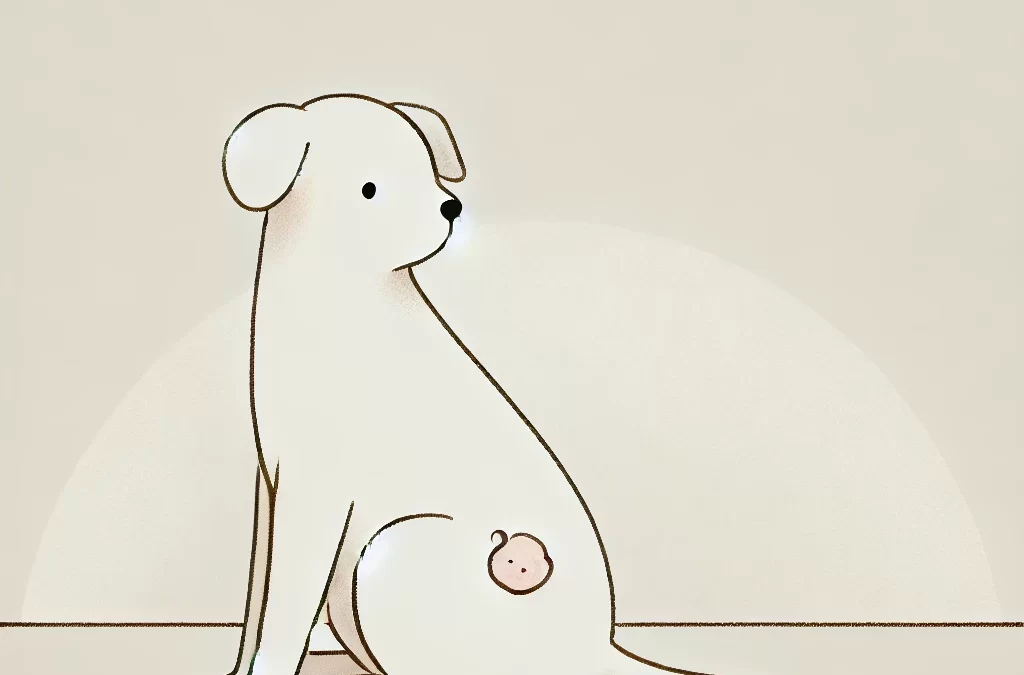
經過 TCMVET | 2024 年 11 月 25 日 | 狗癌症和腫瘤
骨肉瘤是一種高度侵襲性的骨癌,常常讓狗主人感到恐懼。截肢和化療等傳統治療雖然很常見,但可能會帶來經濟和情緒上的負擔。然而,自然療法因其改善生活品質、緩解症狀和支持身體癒合過程的潛力而受到關注。下面,我們深入研究針對犬骨肉瘤的各種創新自然療法。
了解狗的骨肉瘤
骨肉瘤通常影響大型和巨型品種,以四肢為目標。其特徵是腫瘤生長快,肺部轉移風險高。早期發現和多方面的治療方法可以顯著提高狗的生活品質。
支持您的狗的旅程的自然療法
1. 緩解疼痛的草藥
自然的疼痛管理可以減少對藥物的依賴,而藥物通常有副作用。考慮這些草藥:
- 鋸緣乳香:這種樹脂以其抗炎特性而聞名,可減少腫脹並提高活動能力。
- 薑黃(薑黃素):薑黃是一種有效的抗發炎和抗氧化劑,可以緩解關節不適,並已研究其抗癌作用。
- 雲南白藥:一種中草藥配方,以促進血液循環和緩解疼痛而聞名,尤其是在骨骼相關損傷或癌症的情況下。
2. 增強免疫力的飲食策略
在癌症治療期間,營養在支持狗的免疫系統方面發揮關鍵作用。重點關注:
- 高蛋白飲食:維持肌肉質量和能量水平。
- Omega-3 脂肪酸:存在於魚油中,有助於減少發炎並可能減緩腫瘤生長。
- 低碳水化合物、高脂肪膳食:癌細胞靠糖而茁壯成長,因此生酮飲食可能會限制腫瘤的進展。
3. 大麻二酚 (CBD) 用於癌症支持
從大麻中提取的 CBD 油因其抗炎和抗腫瘤特性而聞名。它有幫助:
- 減少疼痛和焦慮。
- 提高食慾和能量水平。
- 正如新興研究所示,可能抑制癌細胞的生長。
選擇 CBD 油時,請確保它是全譜、有機且不含 THC 的。
4. Acupuncture and Traditional Chinese Medicine (TCM)
針灸等中醫治療可以透過以下方式補充其他療法:
- 減輕疼痛並改善血液循環。
- 增強免疫功能。
- 恢復身體能量(氣)的平衡。
草藥配方如 白兔小 可以專門針對腫瘤生長並增強整體健康。請務必諮詢具有中醫經驗的獸醫,為您的狗量身定制治療方法。
5.物理治療和溫和的運動
手術後或作為安寧療護的一部分,物理治療有助於:
- 保持活動能力並防止肌肉萎縮。
- 提高情緒和精神投入。游泳或有控制的行走等活動對於截肢的狗特別有效。
6.順勢療法
有些寵物主人會探索順勢療法,例如:
- 聚合草屬:這種療法被稱為“骨編織”,可以支持骨骼癒合。
- 赫克拉熔岩:用於骨骼疾病,包括腫瘤和骨肉瘤。
請諮詢順勢療法獸醫以獲得正確的指導和劑量。
案例研究:自然之旅
以貝拉(Bella)的故事為例,她是一隻被診斷出患有骨肉瘤的 9 歲大丹犬。截肢後,她的主人在常規治療的基礎上補充了高蛋白、低碳水化合物飲食、CBD油和乳香萃取物。定期的針灸治療改善了貝拉的活動能力和情緒。整體方法不僅延長了她的生命,還確保她生活得舒適和有尊嚴。
給狗主人探索自然療法的建議
- 與全面的獸醫合作:合作確保治療安全有效。
- 密切監控進展:定期檢查和影像學檢查有助於評估治療效果。
- 保持開放的心態:結合自然療法和傳統療法通常會產生最佳效果。
情感支持的重要性
照顧患有癌症的狗可能會讓人精神疲憊。建立一個由朋友、家人和整體獸醫組成的支持網絡,確保您在這段旅程中並不孤單。
結論
狗骨肉瘤的自然療法著重於提高生活品質、減輕疼痛和支持免疫系統。透過將實證自然療法與傳統療法結合,您可以製定一個優先考慮狗狗舒適和健康的護理計劃。請記住,每隻狗都是獨一無二的,量身定制的方法是成功的關鍵。
當然,你的狗狗夥伴應該有一個戰鬥的機會。

經過 TCMVET | 2024 年 11 月 24 日 | 狗癌症和腫瘤
當心愛的寵物被診斷出患有癌症時,它們的人類同伴的情感損失是巨大的。但除了心痛之外,還有另一個令人畏懼的現實:治療費用。寵物癌症治療可以挽救生命,但通常價格昂貴。那麼,給你毛茸茸的朋友一個戰鬥機會的真正成本是多少——我們如何用美元來衡量他們的生命價值?
分解平均成本
寵物癌症治療的費用根據癌症類型、診斷階段、治療選擇和地點等因素有很大差異。以下是一般細分:
- 診斷:
- X 光、超音波、活組織檢查和血液檢查的費用介於 $500 和 $1,500。 CT 掃描或 MRI 等先進影像可以添加另一個 $1,000 至 $2,500.
- 手術:
- 手術切除腫瘤的範圍通常包括 $1,000 至 $5,000,取決於複雜性和位置。
- 化療:
- 化療方案的費用可能介於 $3,000 和 $10,000,取決於療程次數和使用的藥物。
- 放射治療:
- 這種先進的治療範圍包括 $5,000 至 $15,000,使其成為最昂貴的選擇之一。
- 安寧療護:
- 如果治癒性治療不可行,用於控制症狀的安寧療護仍然會花費大量費用 $500 至 $2,000.
總而言之,治療寵物癌症的平均費用可能介於 $5,000 和 $20,000——有時甚至更高。這些數字發人深省,尤其是在與家庭預算進行權衡時。
情感成本與財務成本
對許多寵物父母來說,尋求癌症治療的決定不僅僅是經濟上的,而且是深深的情感上的。寵物是家人,不盡一切努力拯救它們的想法讓人難以忍受。然而,獸醫腫瘤學的現實是,成功並不能保證,即使積極的治療也只能將寵物的生命延長幾個月或幾年。
- 情感因素:
透過治療獲得的時間價值——無論是幾週、幾個月還是幾年——都無法輕易量化。許多寵物主人表示,即使多花幾個月的時間與寵物相處,也是值得的。
- 財務壓力:
然而,經濟負擔可能會導致內疚和壓力,尤其是當治療費用幹擾家庭需求時。這是一個不令人羨慕的處境:當愛情岌岌可危時,你如何拒絕?
有辦法降低成本嗎?
面臨癌症診斷的寵物主人應該知道有一些方法可以管理和降低治療費用:
- 寵物保險:
如果儘早購買,寵物保險可以涵蓋很大一部分癌症治療費用。然而,先前存在的疾病通常被排除在外。
- 非營利組織:
一些組織為寵物醫療護理,特別是癌症治療提供經濟援助。
- 整體和安寧療護選擇:
對於預後不良的寵物,CBD油、針灸或天然補充劑等整體治療可能提供更實惠的方法來改善生活品質。
- 臨床試驗:
一些獸醫機構對新的癌症治療方法進行臨床試驗,通常會承擔部分費用。
- 與您的獸醫討論選擇:
許多獸醫願意與寵物主人合作制定現實且負擔得起的治療計劃。一些診所還提供付款計劃。
值得嗎?
寵物癌症治療費用是否「值得」的問題是非常個人化的。對某些人來說,答案是肯定的──因為對愛情來說,沒有什麼代價是太高的。對其他人來說,放棄治療的決定並不是失敗的標誌,而是一種同情心的表現,優先考慮寵物的舒適和尊嚴,而不是不惜一切代價延長它們的生命。
重新定義寵物癌症照護的價值
最終,寵物癌症治療的平均費用不僅僅是一個財務統計數據,還反映了我們為毛茸茸的同伴付出的努力。這段旅程既關乎金錢,也關乎希望、愛和韌性。無論是選擇接受治療還是選擇安寧療護,這個決定都應該尊重您與寵物的連結及其生活品質。
隨著獸醫腫瘤學領域的進步,也許有一天我們將不必用金錢來衡量我們的愛。在那之前,我們將竭盡全力,用心和錢包,讓我們的寵物過上應有的生活。

經過 TCMVET | 2024 年 11 月 24 日 | 狗癌症和腫瘤
近年來,使用自然療法治療犬類癌症引起了廣泛關注,艾草成為一個有趣的競爭者。科學上稱為 苦艾艾草在傳統醫學中有著悠久的歷史,但在治療癌症(尤其是狗的癌症)方面的潛在益處直到最近才引起了研究人員和寵物主人的興趣。這種古老的草藥能否有望對抗犬類癌症?
什麼是艾草?
艾草是一種多年生草本植物,以其苦味和藥用特性而聞名。艾草傳統上用於治療消化問題和寄生蟲感染,但也因其潛在的抗發炎、抗菌甚至抗癌特性而受到認可。其關鍵活性化合物青蒿素因其對抗人類某些類型癌細胞的有效性而被廣泛研究。
艾草與癌症背後的科學
研究表明,青蒿素可能透過靶向富含鐵的癌細胞發揮作用,鐵是一種礦物質,癌細胞經常累積以支持其快速生長。青蒿素與這種鐵相互作用,產生自由基,可以破壞癌細胞,同時使健康細胞相對不受傷害。雖然大多數研究都集中在人類應用上,但這些原理引發了人們對獸醫腫瘤學的興趣。
艾草和犬癌症:潛在的聯繫
被診斷出患有癌症(如骨肉瘤、淋巴瘤或肥大細胞瘤)的狗通常面臨昂貴的侵入性治療,如手術、化療或放射治療。許多寵物主人正在轉向補充療法來改善他們的狗的生活質量,為此目的越來越多地探索艾草。整體獸醫和寵物主人的軼事證據表明,艾草可能有助於減少腫瘤生長、減輕發炎並增強整體活力。
艾草如何幫助狗狗治療癌症
- 抗癌特性:艾草中的青蒿素可以靶向並殺死癌細胞,可能減緩疾病的進展。
- 抗發炎作用:艾草的抗炎特性可以減少患有腫瘤或轉移的狗的不適並改善其活動能力。
- 免疫支持:艾草被認為可以支持免疫系統,這對狗狗對抗癌症至關重要。
注意事項和注意事項
儘管艾草具有潛力,但並非沒有風險。高劑量可能有毒,導致嘔吐、腹瀉或神經系統問題等副作用。此外,並非所有的狗都適合艾草療法。在將艾草引入您的狗的治療方案之前,諮詢整體或綜合獸醫是至關重要的。
現實的期望:一個補充工具
值得注意的是,艾草並不能治癒癌症,而是一種潛在的補充療法。它的好處可能會根據癌症的類型和階段以及狗的整體健康狀況而有所不同。將艾草與傳統療法或其他自然療法(例如 CBD 油或藥用蘑菇)結合,可以提高其療效,同時提供多方面的癌症治療方法。
艾草在獸醫學研究中的未來
艾草治療犬癌症缺乏廣泛的臨床試驗,凸顯了進一步研究的必要性。然而,早期發現和軼事成功表明它有望成為更廣泛的自然癌症治療策略的一部分。經過更多的科學驗證,艾草可能成為整體獸醫護理的主要成分。
結論
對於尋求其他選擇來改善狗的生活品質的寵物主人來說,艾草代表了一種令人著迷的可能性。其潛在的抗癌和支持特性使其成為犬類癌症治療中值得考慮的候選者。然而,與任何治療一樣,謹慎和專業指導是關鍵。如果您正在為您的狗探索艾草,請記住:走向健康的旅程通常需要結合傳統和現代方法的優點。
艾草和狗癌症-一種應對現代挑戰的古老草藥。這會是您毛茸茸的朋友需要的自然解決方案嗎?只有時間和研究才能證明一切。

經過 TCMVET | 2024 年 11 月 23 日 | 狗癌症和腫瘤
肥大細胞瘤(MCT)是狗最常見的癌症類型之一,通常表現為皮膚上的腫塊。雖然有些狗透過及時治療而存活下來,但其他狗卻死於這種疾病。肥大細胞瘤導致死亡的過程既複雜又漸進,涉及一系列影響狗整個身體的生物破壞。本文深入探討了肥大細胞腫瘤如何導致致命結果的尚未充分探索的過程。
生物戰場:了解肥大細胞腫瘤
肥大細胞是免疫系統的一部分,負責釋放組織胺和其他化學物質來對抗過敏原和感染。然而,當這些細胞發生癌變時,它們會對體內造成嚴重破壞。
肥大細胞腫瘤常常變得危險,不是因為原發腫瘤本身,而是因為它們的全身效應。這些影響可能會引發危及生命的併發症,其方式可能會讓許多狗主人感到驚訝。
沉默的殺手:死亡背後的機制
1.組織胺超載:內部風暴
肥大細胞腫瘤最陰險的影響之一是組織胺和其他化學介質的過度釋放。這可能導致:
- 胃潰瘍:組織胺會刺激胃酸產生,進而導致潰瘍。這些潰瘍可能會出血,導致嚴重貧血或危及生命的出血。
- 休克:組織胺的突然釋放可能導致全身性發炎和血壓危險下降,可能導致過敏性休克。
2. 器官衰竭:骨牌效應
當肥大細胞腫瘤轉移時,它們會侵入肝臟、脾臟和骨髓等重要器官。這可能會導致:
- 肝功能障礙:肝臟無法處理毒素,可能導致黃疸和全身中毒。
- 骨髓抑制:如果肥大細胞浸潤骨髓,紅血球和白血球的產生就會受到損害,導致貧血和免疫系統減弱。
3.惡病質:癌症消耗綜合症
惡病質或癌症相關的體重減輕是患有晚期肥大細胞腫瘤的狗的常見死亡原因。腫瘤改變狗的新陳代謝,導致:
- 肌肉損失:儘管吃東西,狗還是會失去肌肉質量和力量。
- 疲勞:這種使人衰弱的狀況甚至會使簡單的活動變得難以忍受。
4. 不受控制的腫瘤生長:局部破壞
在某些情況下,腫瘤本身會急劇生長,浸潤周圍組織。這可能會導致:
- 開放性傷口:潰瘍的腫瘤可能會被感染,導致敗血症。
- 疼痛和活動能力問題:關節或關鍵結構附近的腫瘤會導致劇烈疼痛並限制活動。
超越生物學:情緒與行為的變化
患有肥大細胞瘤的狗可能會因疼痛、不適或全身性疾病而表現出行為改變。不安、攻擊性或退縮等跡象常常被忽視,但卻顯示了他們痛苦的嚴重程度。
打破沉默:早期介入的重要性
雖然肥大細胞腫瘤可能是致命的,但它們的進展並不總是不可避免的。早期發現和治療可以大大改變結果。以下是一些積極主動的步驟:
- 常去看獸醫:定期檢查會增加早期發現腫瘤的機會。
- 對所有腫塊進行活檢:即使看起來良性的腫塊也可能是肥大細胞瘤。
- 聯合療法:手術、放療和化療是常見的方法,但免疫療法等新方法正在出現。
新興前沿:MCT 的整體護理
除了傳統治療之外,整合整體方法可以改善狗的生活品質:
- 飲食調整:含有 omega-3 脂肪酸的抗發炎飲食可以支持整體健康。
- 草藥補充劑:薑黃和乳香等成分可能有助於減輕發炎。
- 減輕壓力:慢性壓力會加劇癌症症狀;平靜的環境和溫和的運動可能會有所不同。
什麼時候該說再見?
決定對患有肥大細胞腫瘤的狗實施安樂死是寵物主人可以做出的最艱難的選擇之一。生活品質量表(QoL)等工具可以指導這個決定,重點是疼痛程度、食慾和狗狗享受日常活動的能力。
結論:理解賦予力量
肥大細胞腫瘤不僅僅是腫塊,它們是全身性威脅,可以悄無聲息地逐漸淹沒狗的身體。透過了解其死亡背後的機制,寵物主人和獸醫可以做出明智的決定,以減輕痛苦並改善結果。憑藉知識的力量,我們可以確保與心愛的寵物相處的每一刻都盡可能無痛苦和充實。

經過 TCMVET | 2024 年 11 月 23 日 | 狗癌症和腫瘤
當我們毛茸茸的朋友被診斷出患有癌症時,控制他們的疼痛成為最緊迫的問題之一。疼痛不僅影響他們的生活質量,也影響他們吃飯、玩耍和互動的意願。藥物等傳統止痛方法通常會帶來副作用,可能會讓寵物主人感到矛盾。但是,如果我們超越傳統,探索突破性的整體疼痛管理方法,結果會是什麼?
了解患有癌症的狗的疼痛
患有癌症的狗的疼痛通常是多方面的。腫瘤會壓迫神經、侵入組織或引起炎症,導致急性或慢性不適。了解這種疼痛的性質是選擇正確緩解方法的關鍵。
非類固醇抗發炎藥或鴉片類藥物等傳統選擇有其一席之地,但它們可能會帶來胃腸道不適、肝臟勞損或依賴性等風險。現在是時候跳出思維定勢,為寵物主人提供替代方案,不僅可以減輕疼痛,還可以支持整體健康。
緩解疼痛的整體方法
1. 針灸和穴位按摩
針灸植根於古代中醫,受到世界各地獸醫的關注。透過刺激身體上的特定穴位,針灸有助於釋放內啡肽(人體的天然止痛藥),並改善流向受影響區域的血液。
- 為什麼它有效: 研究表明,針灸可以減輕疼痛和炎症,對於患有癌症相關不適的狗來說是一個可行的選擇。
2. 草藥止痛藥
某些草藥已顯示出減輕發炎和疼痛的希望。成分如 川芎(四川獨生)、薑黃和乳香具有天然的抗發炎特性。
- 如何使用它們: 這些可以作為補充劑或茶(在獸醫指導下)加入,以減少對傳統藥物的依賴。
3. 全譜大麻油
從大麻中提取的 CBD 因其具有控制疼痛和焦慮的雙重能力而成為寵物主人的最愛。全譜油含有額外的大麻素和萜烯,可以協同作用,提供更多緩解。
- 它的與眾不同之處在於: CBD 與人體的內源性大麻素系統相互作用,解決發炎和調節疼痛,而沒有 THC 的精神作用。
4. 冷激光治療
冷雷射療法是一種非侵入性治療,利用光刺激細胞再生並減少發炎。這項技術無痛,可以顯著提高活動能力和舒適度。
5. 飲食作為疼痛管理者
營養豐富、抗發炎的飲食可以改變患有癌症的狗的遊戲規則。富含 omega-3 脂肪酸(存在於魚油中)和抗氧化劑的食物有助於減少全身發炎和疼痛。
- 嘗試食譜: 煮熟的瘦肉、胡蘿蔔和西蘭花等蔬菜泥以及少量薑黃或生薑的混合物既營養又具有治療作用。
疼痛管理的情緒部分
疼痛不只是身體上的,還有情感上的。狗在疼痛時通常會變得孤僻或煩躁。為他們提供一個無壓力的環境、充足的關懷和精神刺激可以產生巨大的影響。
試試這個: 將按摩療法納入您的狗的日常生活中。輕柔的撫摸和壓力可以幫助放鬆緊張的肌肉並改善血液循環,同時也是一種親密的活動。
未來一瞥:再生醫學
幹細胞療法等再生醫學的令人興奮的進步正在為創新的狗癌症疼痛緩解鋪平道路。幹細胞可以修復受損組織並減少炎症,為以前認為無法治療的疾病帶來希望。
制定全面的疼痛管理計劃
緩解狗狗的癌症疼痛不是要選擇一種方法,而是要製定個人化的計畫。與您的獸醫密切合作,結合最好的傳統療法和替代療法。
計劃範例:
- 早上:CBD油和早餐
- 下午:針灸療程或冷雷射治療
- 晚上:草藥補充劑和富含歐米伽的膳食
何時說再見
疼痛管理不僅與狗有關,還與寵物父母有關。知道何時放手是最困難的決定之一,但有時這是最有愛的選擇。使用以下工具監控您的狗的生活質量 HHHHHMM 量表 (受傷、飢餓、補水、衛生、幸福、流動性以及好日子多於壞日子)可以幫助指導這個決定。
結論:止痛是一段旅程,不是目的地
治療狗的癌症疼痛需要創造力、同情心和探索非常規選擇的意願。從針灸到飲食調整,您為減輕疼痛而採取的每一個小步驟都可以改善您的狗的生活品質。作為寵物主人,我們給狗狗最好的禮物就是確保它們的最後一章充滿盡可能多的舒適和愛。

經過 TCMVET | 2024 年 11 月 22 日 | 狗癌症和腫瘤
在你的狗身上發現腫塊或腫塊可能是一種令人震驚的經歷,但並非所有的增生都是危險的。例如,囊腫在狗中相對常見,而且通常是良性的。然而,問題來了:狗的囊腫會自行消失嗎?讓我們來分解這個問題,探討囊腫的類型、原因和自然療法,以及何時需要專業介入。
囊腫到底是什麼?
囊腫是充滿液體、半固體物質或空氣的封閉囊。它們通常在皮膚下形成,大小各異。狗的囊腫通常是由毛囊阻塞、外傷或感染引起的。雖然大多數是無害的,但了解它們的性質是確保您的狗的健康的關鍵。
狗的囊腫類型
- 皮脂腺囊腫:由油腺阻塞引起,是最常見的類型。這些通常表現為生長緩慢的小腫塊,並且會隨著時間的推移而破裂。
- 濾泡囊腫:與毛囊阻塞有關,通常是因刺激或遺傳所致。
- 真性囊腫:包裹在上皮襯裡中,這些罕見但獨特。
- 膿腫:雖然嚴格來說不是囊腫,但它們是充滿膿液的感染腫塊,經常被誤認為是囊腫。
它會自行解決嗎?
答案取決於囊腫的類型和根本原因:
- 皮脂腺囊腫:這些可能會自行破裂並排出,但除非完全移除囊,否則它們通常會重新填充。
- 濾泡囊腫:如果沒有乾預,這些很少會消失,並且可能會隨著時間的推移而增長。
- 感染的囊腫或膿腫:需要立即治療以防止併發症。他們不會自行痊癒。
雖然有些囊腫的大小可能會暫時縮小,但完全自行消退的情況並不常見。
管理囊腫的自然方法
如果囊腫很小、無痛,並且您的獸醫已確認它是良性的,則可以考慮自然療法。這些療法旨在減少發炎、預防感染並促進皮膚健康:
1. 熱敷
熱敷可以促進血液流向該區域,幫助囊腫自然排出。使用浸有溫水的乾淨布輕輕擦拭 5-10 分鐘,每天兩次。
2.薑黃醬
薑黃的抗炎和抗菌特性使其成為整體寵物護理中的最愛。將薑黃粉與椰子油混合形成糊狀,然後塗抹在囊腫上(經獸醫批准)。
3.蓖麻油
蓖麻油富含蓖麻油酸,有助於減輕發炎。用棉花棒將少量塗抹在囊腫上。
4.飲食調整
為您的愛犬添加 omega-3 脂肪酸(魚油)和抗氧化劑的飲食可以改善整體皮膚健康。確保他們的飲食富含維生素 E 和 C 以支持組織修復。
5. 草藥療法
金盞花和洋甘菊敷布具有舒緩作用,並可能促進癒合。
何時去看獸醫
雖然自然療法可以有效治療小型良性囊腫,但某些情況需要專業護理:
- 快速成長:如果囊腫迅速增大,則可能表示有潛在問題。
- 疼痛或不適:如果您的狗表現出疼痛跡象、避免被觸摸或過度舔舐該區域。
- Infection:發紅、腫脹、發熱或滲膿是囊腫感染的跡象。
- 多個腫塊:可能表示存在系統性問題或不同的情況。
- 位置問題:關節或重要器官附近的囊腫應立即檢查。
平衡的方法:自然與科學的結合
狗的囊腫雖然通常無害,但需要仔細觀察。將自然療法與獸醫指導相結合可確保您的狗的舒適和安全。請記住,囊腫很少會完全自行消失,因此積極的護理至關重要。
外賣?如果您發現狗狗身上有囊腫,請不要驚慌。相反,監測它的大小和行為,在適當的時候使用自然療法,並諮詢你的獸醫以排除更嚴重的情況。透過平衡和明智的方法,您可以讓您的毛茸茸的朋友保持健康、快樂和蓬勃發展。






